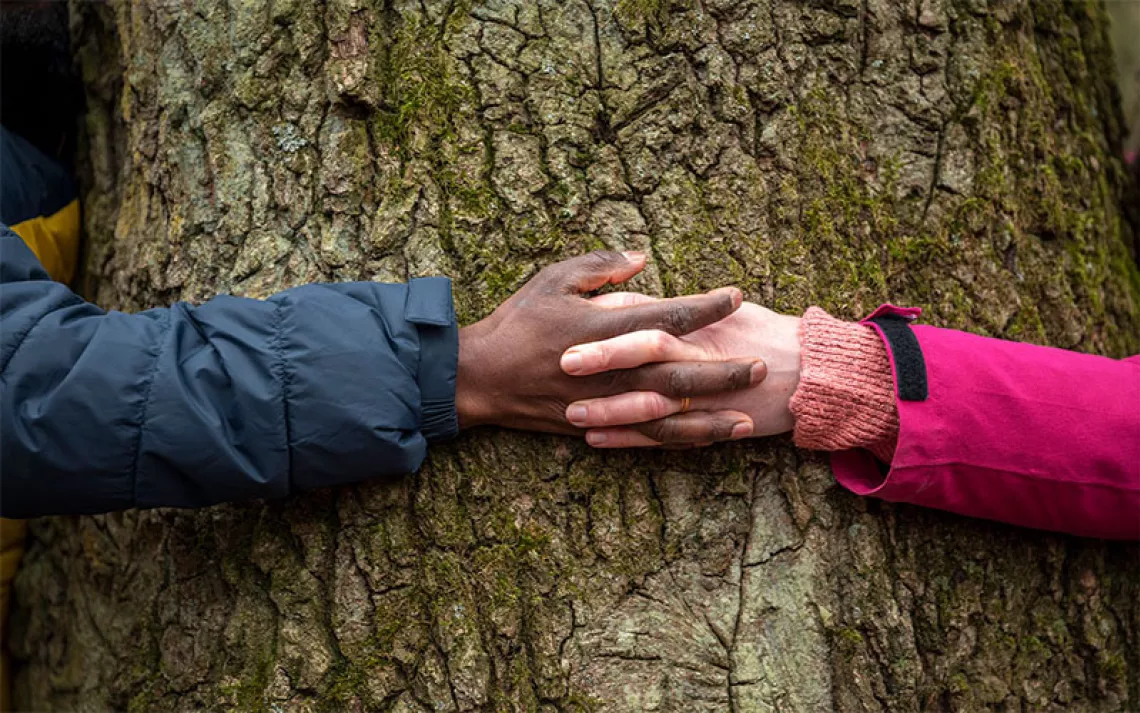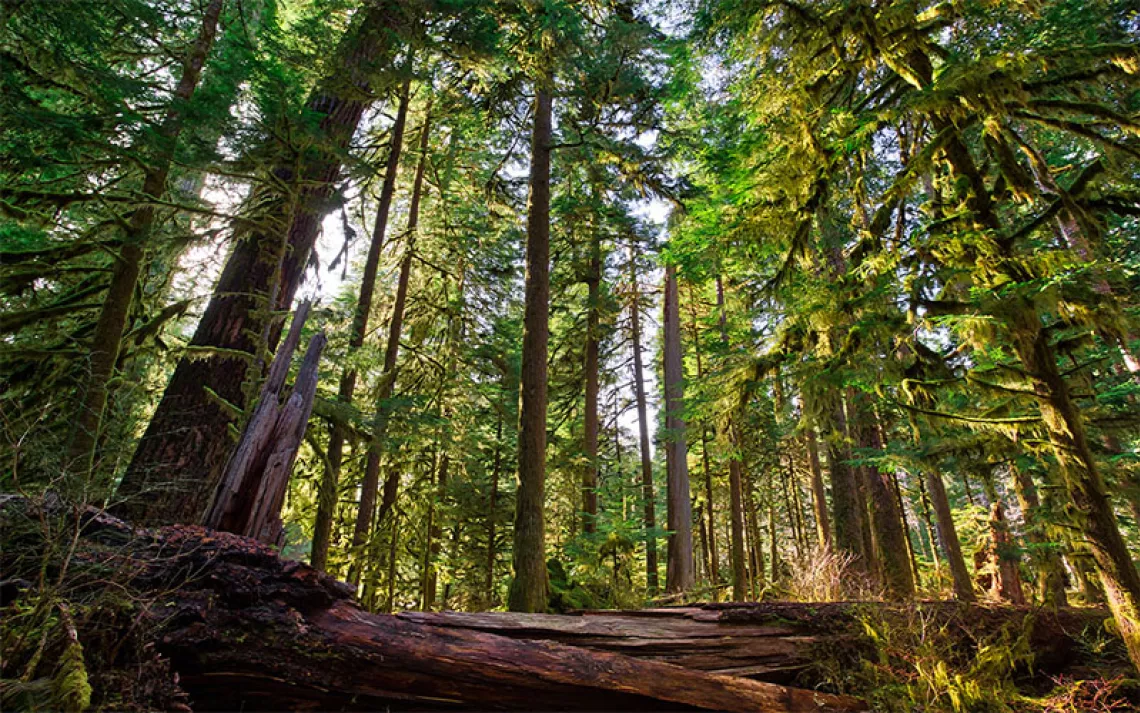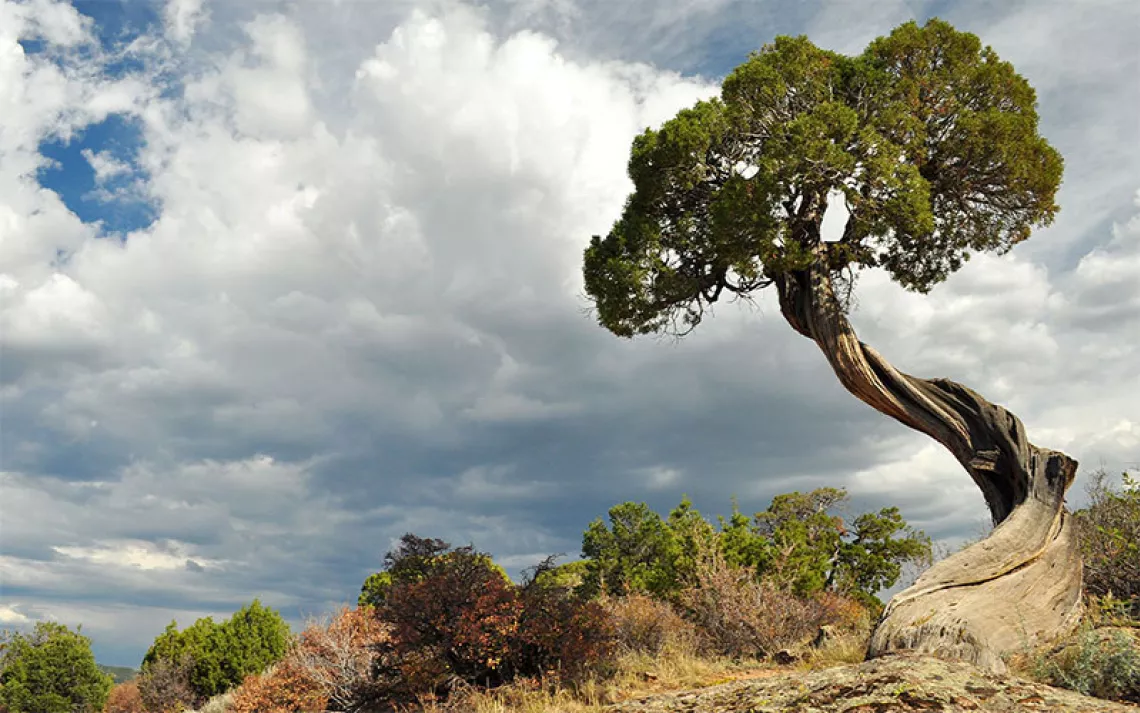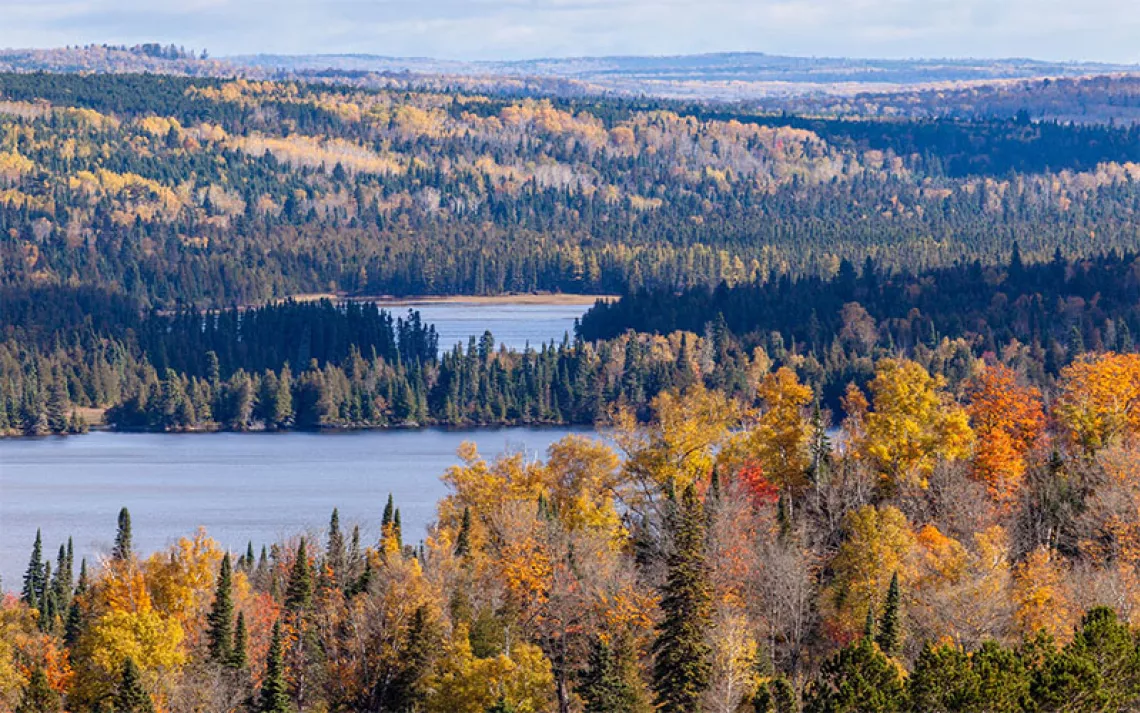The fungus that could bring down Hawaiʻi's Native Forests
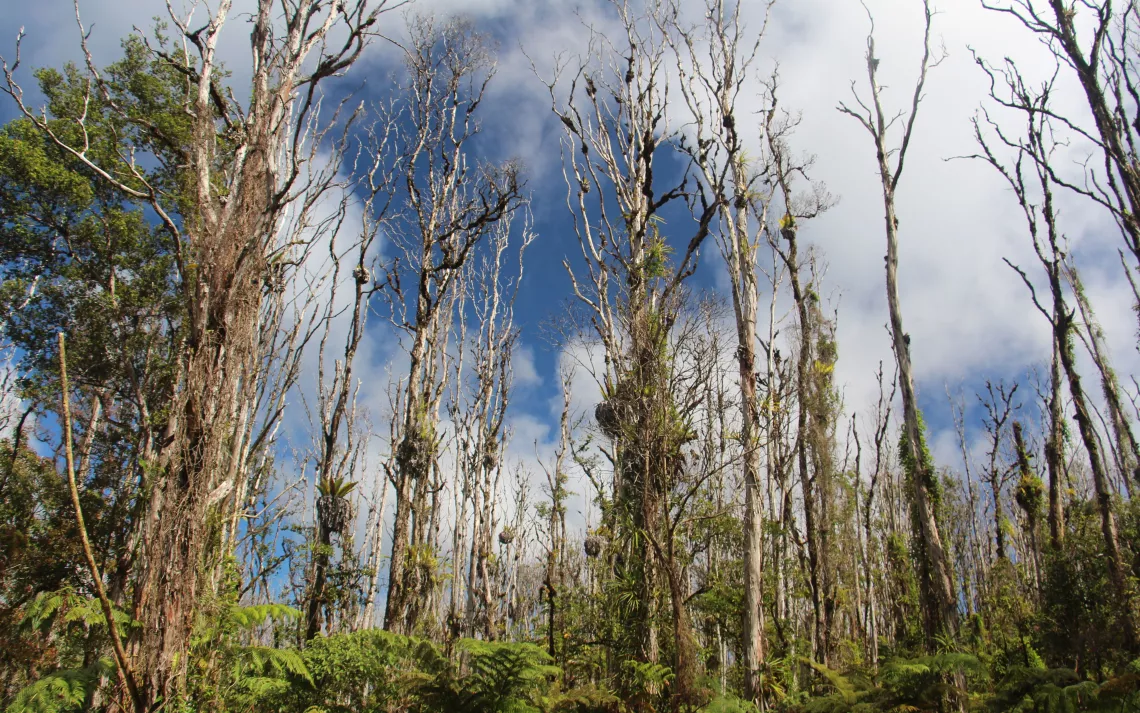
Ōhiʻa trees infected by rapid ōhiʻa death.
|Photos by J.B. Friday
For Hawai'ian botanists who have spent their careers trying to protect island forests from invasive species, the arrival of Ceratocystis fimbriata has been a dire moment of reckoning. The fungus attacks the native keystone species Metrosideros polymorpha—more commonly called ōhiʻa trees—and quickly destroys them. The disease’s virulence has earned it the name “rapid ōhiʻa death.” Although the fungus has so far only affected trees on the island of Hawai'i (the largest in the archipelago), the threat hangs over all the neighboring landmasses.
“People have devoted their whole life to conservation, controlling weeds in remote areas, building fences, controlling feral pigs and animals that destroy the forest. And thinking that you’ve done everything you can to protect these areas and something beyond your control comes—it can be very depressing,” said botanist Chuck Chimera, a weed risk analyst and invasive species specialist on Maui.
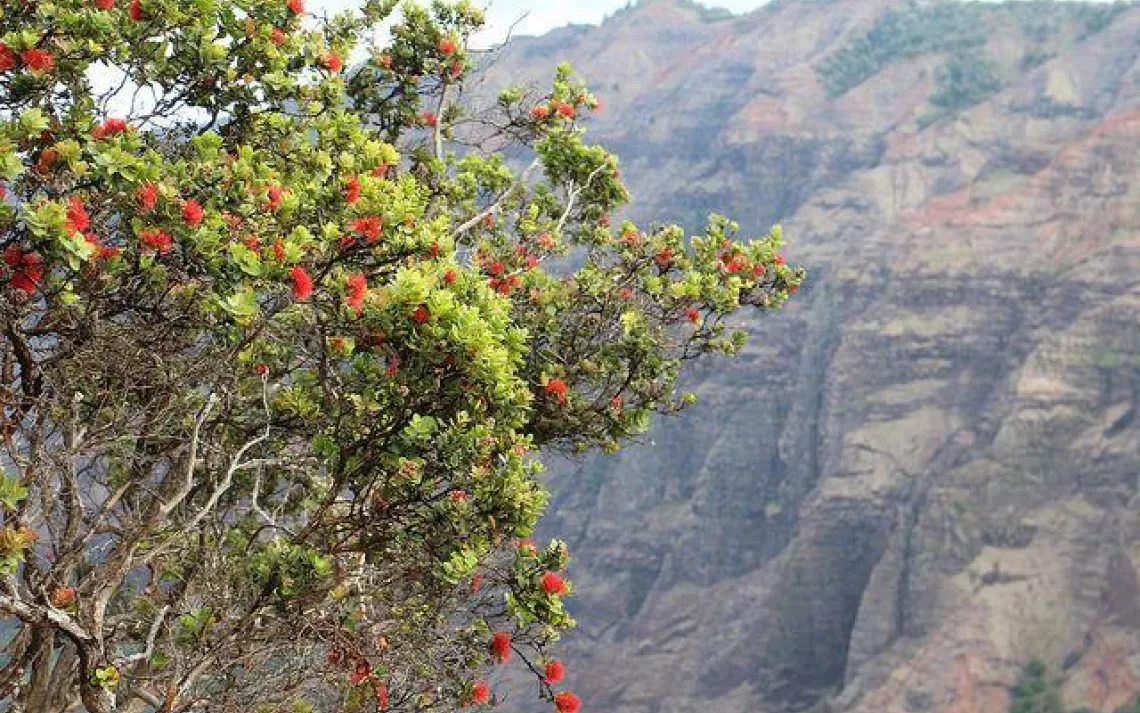
University of Hawai'i extension forester J.B. Friday calls Ceratocystis fimbriata the biggest challenge of his career. “This is the worst thing to happen to the forest since Captain Vancouver brought cattle to the island 200 years ago,” Friday said.
Rapid ōhiʻa death is caused by a strain of a well-known plant-killing fungus that’s also responsible for black rot on sweet potatoes and wilt on mango and coffee trees, and is related to the strain that causes Dutch elm disease. The fungus infiltrates trees and blocks their xylem (vascular tissue) with spore production, causing them to die from lack A healthy ōhiʻa tree. of water.
Within several weeks of showing symptoms, beginning with browning of leaves at the crown, the infected tree dies. There’s no cure, and if an effective fungicide is developed it will only be useful for small numbers of ornamental plants rather than forests full of ōhiʻa trees.
When scientists in Hawai'i first started analyzing the disease in 2012, they found around 1,000 hectares of forest affected by Ceratocystis fimbriata. By 2016 that estimate had jumped to 16,000 hectares, with a mortality rate between 50 and 90 percent. The problem in stopping the fungus is that scientists aren’t entirely sure how it’s spreading between ōhiʻa trees, or how it arrived on the island of Hawai'i, though they have theories on both.
“We found something similar but not exactly identical on some nursery plants,” said plant pathologist Lisa Keith, who works for the USDA Research Service. “You start to plant things and fungus has the capability of doing some recombination and slightly changing and finding new hosts.” And on an island where native forests are around 80 percent Metrosideros polymorpha, the target for a ravenous fungus is an obvious one.
As for how it spreads, researchers believe spores travel through infected soil and insect frass (the sawdust produced when beetles bore into a tree) to capitalize on wounded trees. Even the smallest cracks can offer access to the spores. The fungus can also be transmitted from tree to tree through infected tools, so locals have been instructed to sanitize all cutting instruments with rubbing alcohol after every use.
“In one of our infestation areas we’re seeing feral cattle chewing on the bark and creating very large wounds along the trunk. Those are perfect pathways for the entry of the fungus,” said USDA forester Flint Hughes. “Lo and behold, we’re seeing a lot of disease in those areas.”
What makes rapid ōhi’a death so devastating isn’t just its quick propagation and high mortality rate. It’s the trees being killed off. Ōhi’a trees cover around 865,000 acres of land across the islands and are both culturally and environmentally important. They grow in wet and dry areas and are among the first species to colonize lava flows. They offer habitats for endangered native birds and the most important watershed protection of any tree in the forests. If the islands were to lose the majority of their ōhi’a trees, it would dramatically transform the landscape and environment. Luckily the variability that gives the plant its name and allows it to colonize so many terrains also means that some trees might have innate resistance.
“If any tree in the world would have the variation needed to have that innate resistance, ōhi’a is a good bet, because it’s so genetically diverse,” said Hughes.
But that’s a question researchers have yet to answer. In the meantime hundreds of thousands of trees keep dying, which is why scientists, community leaders, and farmers are working so hard to stop its spread.
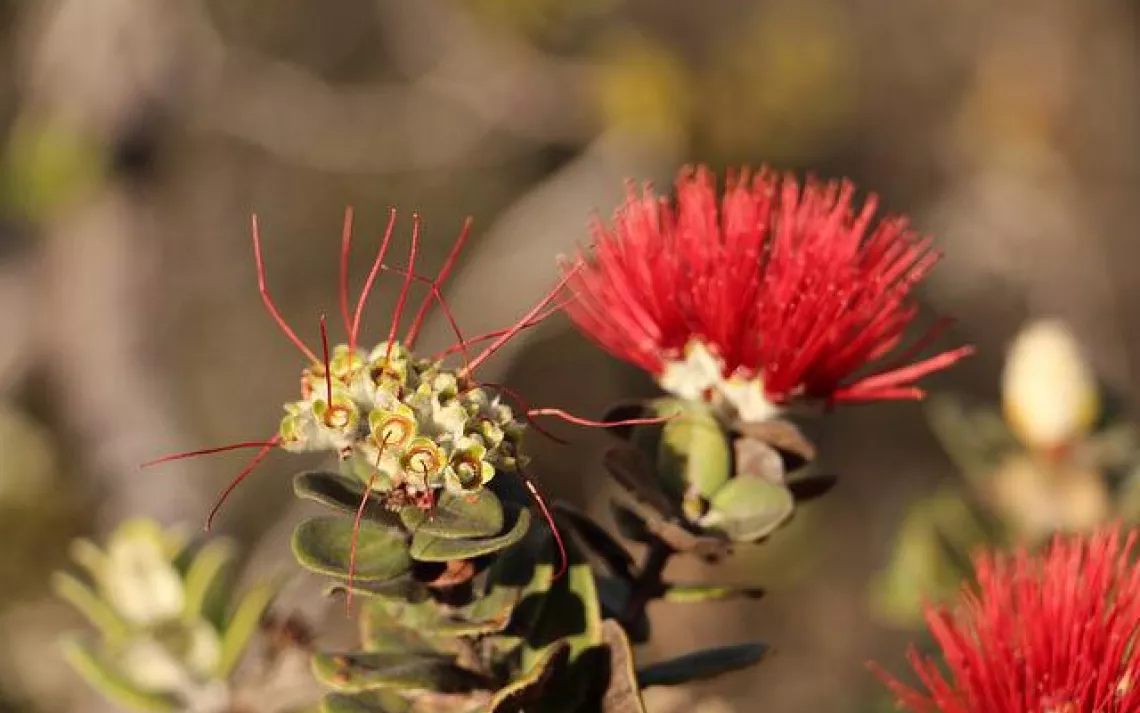
The ōhi’a flower
The Hawai'ian Department of Agriculture has put the Island of Hawai'i on quarantine, with no infected ōhi’a wood or tree products allowed to leave the island. Landowners can report new ōhi’a deaths to scientists researching the issue. Infected trees are being cut down and covered, since the fungus can survive for at least a year in dead tissue and standing trees act as “spore machines,” said Keith. The University of Hawai'i Arboretum has started collecting ōhi’a seeds in hopes that the trees might one day be replanted in the forests.
Even dancers got involved earlier this year during the world’s largest hula festival, Merrie Monarch. When participants finished using leis made from the flowers of ōhi’a trees, they brought the leis to a fire ceremony and burned them so they could be returned to the forest without spreading the disease.
“Everybody is concerned about this, and everybody is trying to do as much as they can to control this disease,” Hughes said. “That wide base of action and support for control of the disease is really a testament to the threat of this problem and the importance of ōhi’a to all of us.”
 The Magazine of The Sierra Club
The Magazine of The Sierra Club
